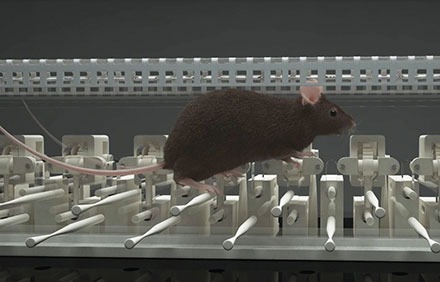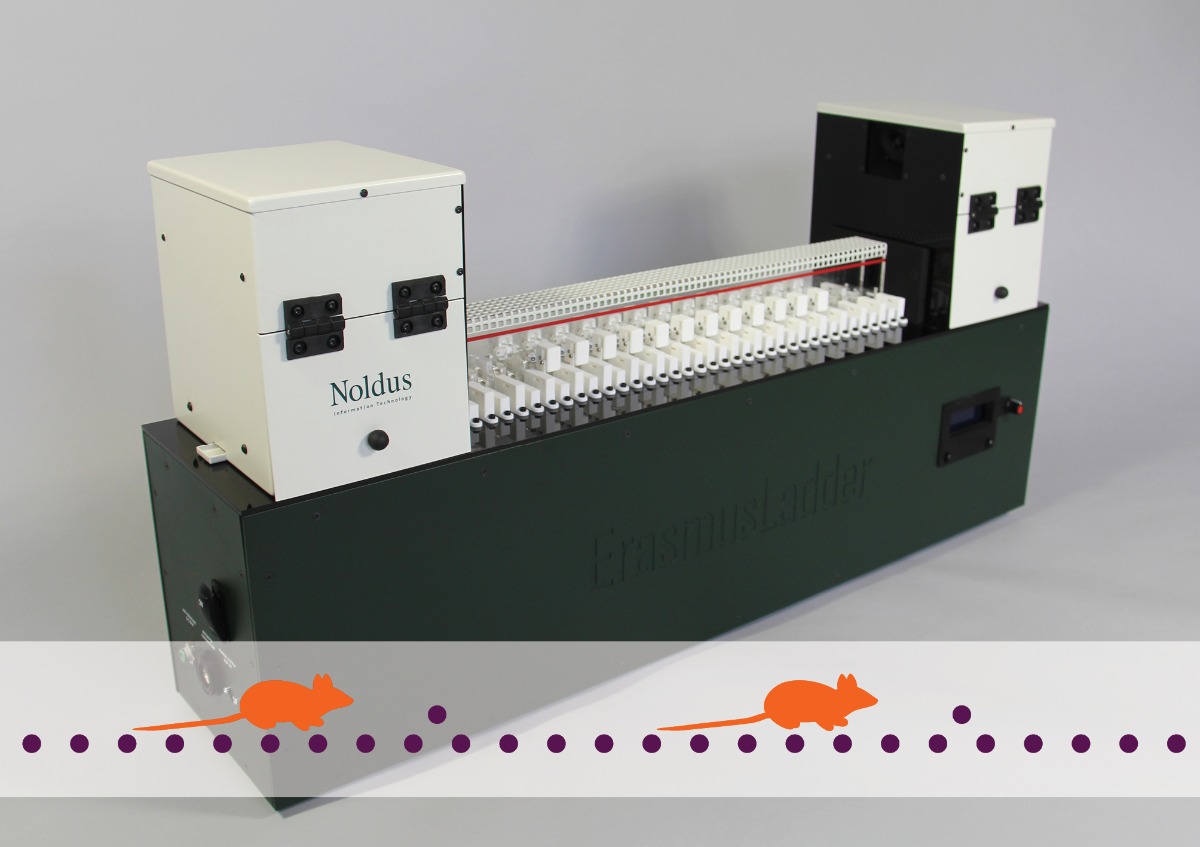ErasmusLadder
Benefits
Fully-automated testing
ErasmusLadder is a custom solution for fully-automated testing of motor learning and motor function in laboratory mice. It is an asset to your lab because it can quickly determine if your mice have motor learning and performance deficits, like no other test can.
Seamless integration
The software integrates measuring locomotor performance (gait, coordination) and associative, adaptive, and conditioned learning.
Non-invasive
Other methods that study locomotor performance (rope climbing, open field tests, and the rotarod) are not able to discriminate whether poor performance is due to cerebellar dysfunction or something else. Traditional tests that do, such as the eye blink test, are invasive and require specific training and detailed monitoring of the animal. The ErasmusLadder is a unique tool because it provides comprehensive data while being completely non-invasive.

(Illustration by BlueLakeVision)
Validated standard protocol
The protocol is set up in the software and once the start signal is sent, a full session including all runs automatically takes place. The data is then sent back to the software for storage and analysis. The standardized protocol was designed, validated, and published by the Erasmus MC (Rotterdam, The Netherlands).
Design your own protocol
You can adjust the protocol, so it can detect cerebellar phenotypes, so it is useful in ataxia research, autism research, and much more. This also allows for the analysis of possible confounding variables.
Easy to use
It is easy to use, requiring hardly any training and animal handling skills.

Cues to motivate the mouse
Motivating cues (air and light) help in getting consistent runs. A bright light urges the animal to leave the box. A pressurized air stream serves as a secondary stimulus, and it also motivates the animal to perform a consistent run over the ladder.
All mice can undergo testing
The paradigm is easy, even severely ataxic mice quickly learn to traverse the ladder. Trials are sufficiently challenging for controls, but not too challenging for experimental groups. This way all mice are able to undergo testing and detailed results are gathered during each run.
Precise challenges
Trials take place in two phases. The second phase includes obstacle trials: the animal is presented with a challenge for which it needs proper cerebellar functioning. In order for this test to work, this challenge needs to be precise, and tuned to the individual and the way it is behaving in that specific run. And that is exactly what the ErasmusLadder does.
Analysis have never been easier
Analysis occurs on-the-fly and without having to create profiles. Just click ‘calculate’!
 English
English German
German French
French Italian
Italian Spanish
Spanish Chinese
Chinese